I’m walking through the high desert scrub when the ground seems to explode under my feet. I see a creature make a seemingly impossible leap. And then I see ears. Really big ears. A black-tailed jackrabbit.
I always enjoy seeing these creatures in the sagebrush and other brushy habitat near my southern Idaho home. They’re a common animal and yet not as easy to see as you might think. They’re quite wary. Getting a clear observation, let alone a photograph, will test your field skills.
I’ve come to think of them as the arid American West’s version of arid Australia’s kangaroos. They’re familiar animals and feature prominently as tourist kitsch. Many visitors would like to see one and figure it will be an easy task. But most road trippers will only encounter them as roadkill.
There are 6 species of jackrabbits that live in Mexico, a small part of Canada and a swath of the western United States. Let’s take a look at these fascinating creatures and where to find them.
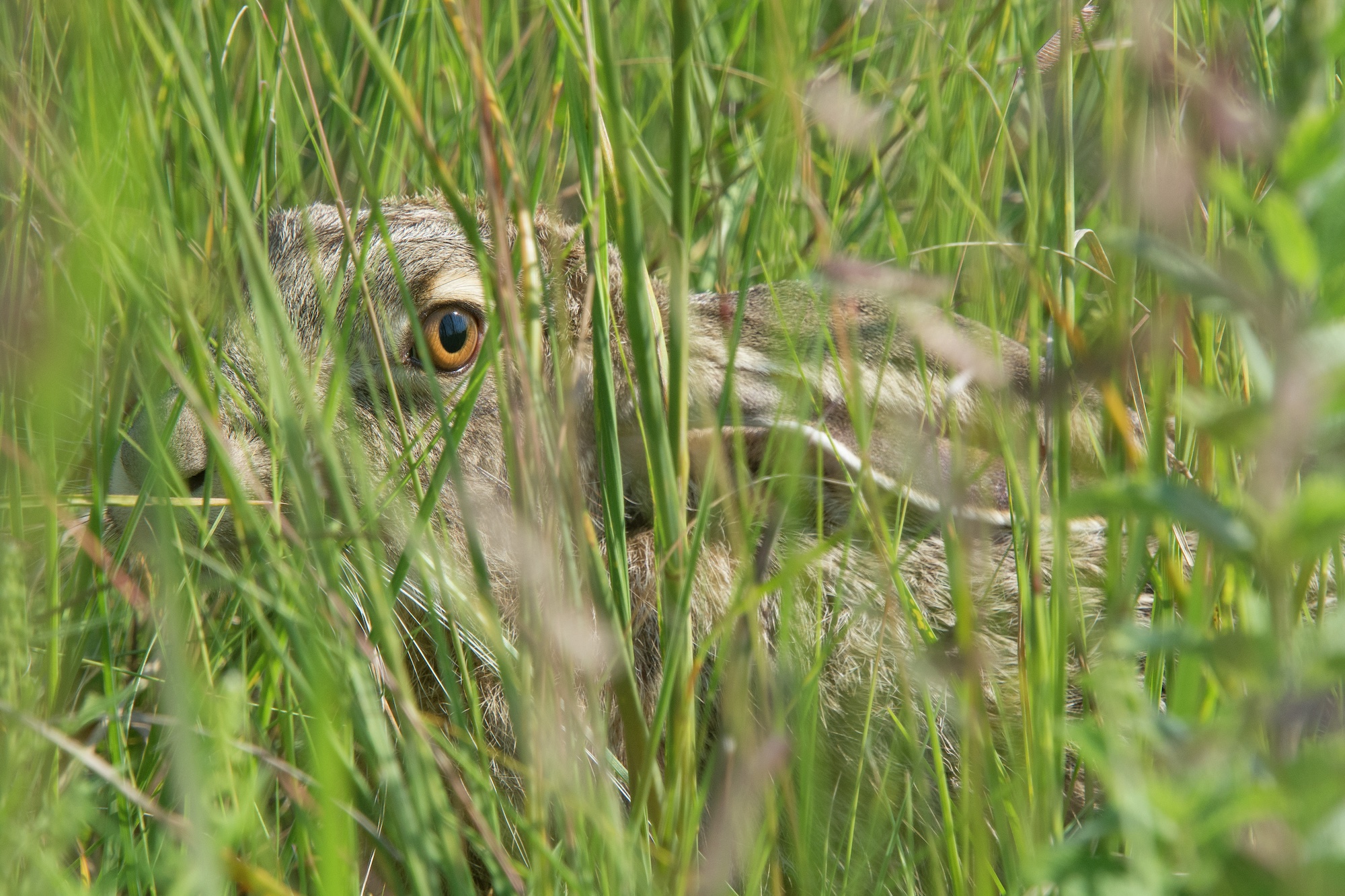
Meet the Jackrabbits
First things first: Jackrabbits are not rabbits. They’re hares. Both rabbits and hares are members of the mammalian order Lagomorpha (as are pikas). Jackrabbit ranges overlap with that of a number of rabbit species in North America, but they’re pretty easy to tell apart just based on size alone. Depending on the species, jackrabbits typically weigh from 5 to 9 pounds, and can be up to two feet long.
The big ears, long legs and large ears of any jackrabbit species are unmistakable. (The desert cottontail also has large ears, but it is a small animal, the size of a typical backyard rabbit).
There are other differences between rabbits and hares. Hares tend to be considerably larger animals. Their babies are born fully furred and are able to scamper around within hours. Rabbits, on the other hand, are born hairless and largely helpless.
Hares do not use burrows like many rabbit species do. They may seek cover in a log. I’ll often find depressions used by black-tailed jackrabbits dug out under big sagebrush. But they don’t den underground.
Jackrabbits are critters of relatively open country. Think sagebrush flats, deserts and grassy plains. They do need over, of course, and can be surprisingly tricky to spot, especially during the day. They are quite active at dawn and dusk, and you will often see them darting across the road during the night.
These animals are built for a speedy getaway. They can jump 20 feet in a bound and race away at 30 miles per hour.
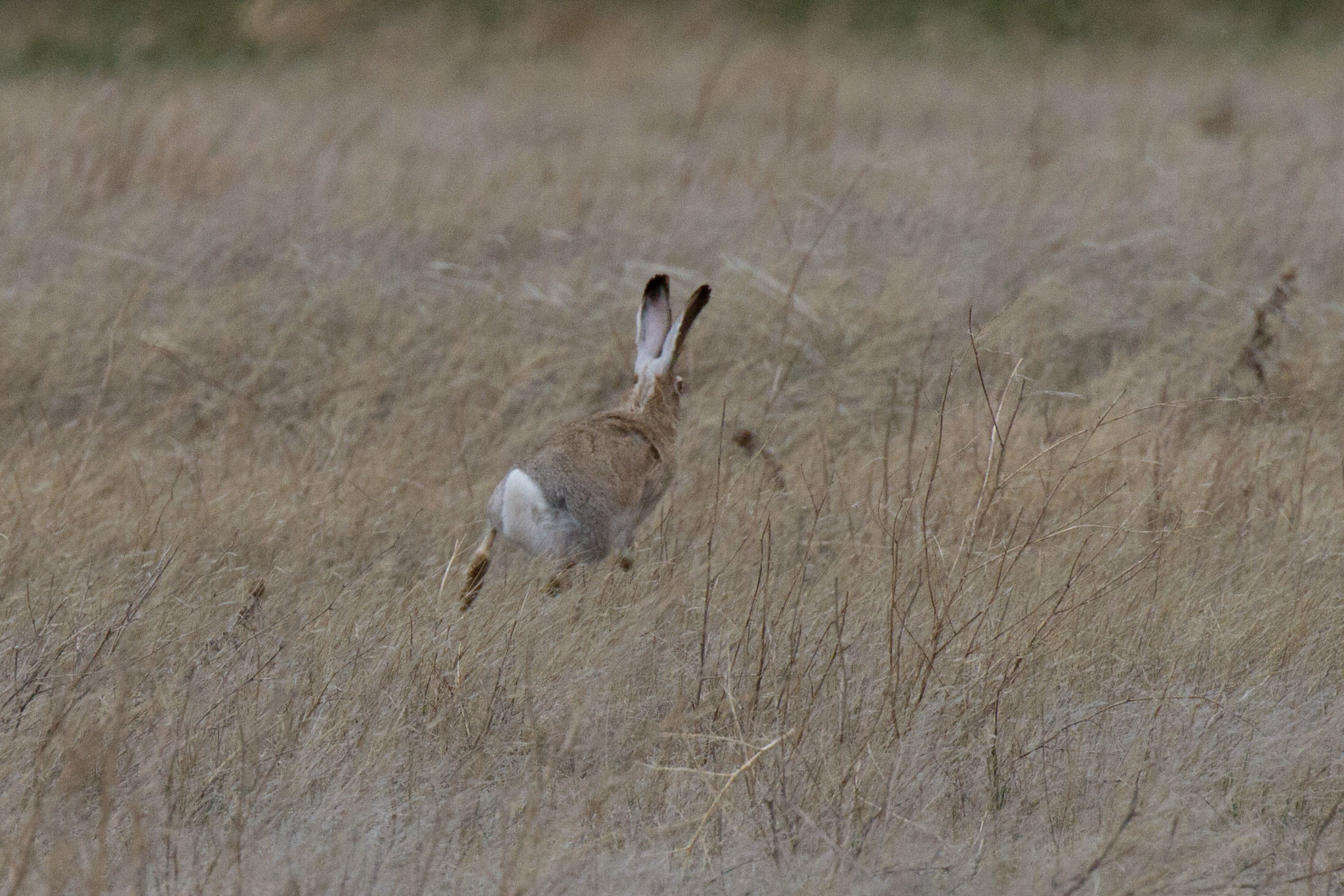
About Those Ears
When someone sees a jackrabbit for the first time, the response is predictable: “Look at those ears.”
They’re an impressive adaptation that helps the jackrabbit thrive in often-harsh environments. The big ears allow jackrabbits to hear predators approaching at a difference. They also serve a cooling function.
Jackrabbit ears are largely hairless. They’re loaded with blood vessels. As described by National Geographic, “A jackrabbit’s big ears provide a large surface area for heat exchange. Furthermore, the blood vessels can widen (a process called vasodilation), allowing more warm blood to circulate to the ears for even greater heat loss.”
At temperatures above 86 degrees Fahrenheit, a jackrabbit’s ears can “shed all of the animal’s excess heat.”
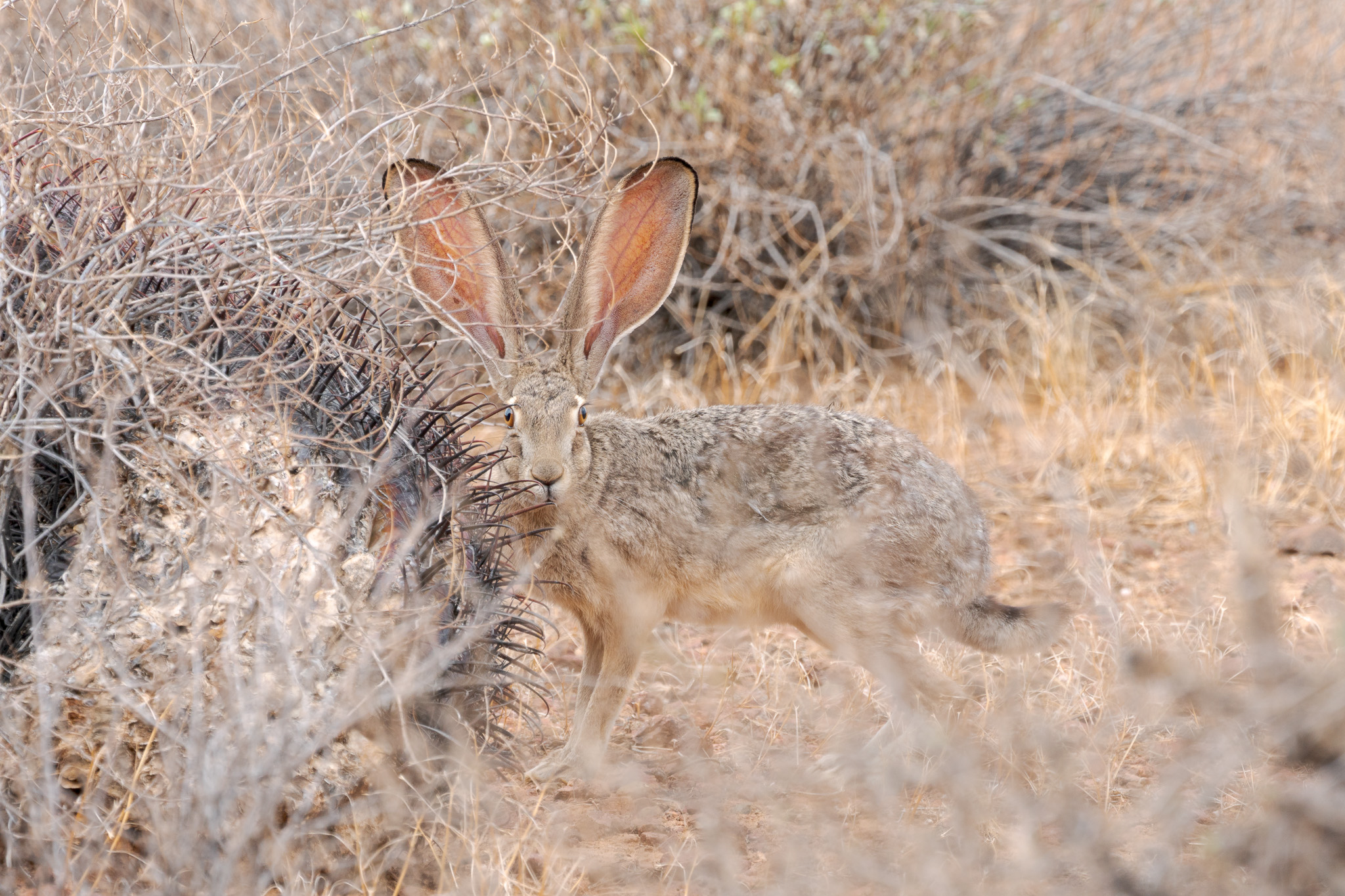
Spotting Jackrabbits
As previously mentioned, you’re probably most likely to spot jackrabbits darting across a desert highway at night. This isn’t the most satisfying view.
It’s far better to slowly cruise quiet roads at dawn and dusk. You can often see animals sitting alongside the road, alert for danger. A “night safari” with a spotlight or good flashlight will often reveal lots of jackrabbits (be sure to check local regulations on this activity).
You can see jackrabbits during the day, too. Note where you have seen them at night and return. Walk very, very slowly through the brush, scanning out ahead. Often you can spot an animal if it’s sitting up and alert.
Look for patches of lighter fur (several species have lighter-colored sides). Look for anything that looks out of place. And, yes, look for big ears.
Scan each bush and watch every step. You will inevitably bump some, especially if you’re in an area with a high jackrabbit density. Sometimes they will jump up just a few feet away from you. Enjoy the bounding leaps as those big ears move through the low brush.
There are 6 jackrabbit species. Some are among the most abundant mammals in the western United States. Others require a specialized safari. Let’s take a look at each one.

Black-tailed Jackrabbit
This is the species you’re most likely to see on your national park vacation. The black-tailed jackrabbit is the most abundant jackrabbit, and it ranges widely across the western United States and Mexico. It can be found as far east as Missouri to coastal California. They can be found in a variety of open and semi-open habitats.
Black-tailed jackrabbits can be identified not only by the black on their tails (as you’d expect), but also by black on their ears. This is quite prominent and the easiest way to distinguish them from other species in their range. They also often have a black stripe visible on their back.
I see large numbers on my high-desert road trips in Idaho, Oregon, Nevada and Utah. This is sagebrush country. I find black-tailed jackrabbits (and sometimes large numbers) in degraded sagebrush habitat. It doesn’t have to be pristine. But there does have to be a fair amount of brushy cover. I never see them in areas completely taken over by invasive cheatgrass. The cover is key.
Black-tailed jackrabbit populations are cyclical. If you spend a lot of time exploring their habitat, as I do, this is quite noticeable. Some years, I can see dozens of jackrabbits in an outing. Other years, in the same place, I might struggle to catch a glimpse of one.
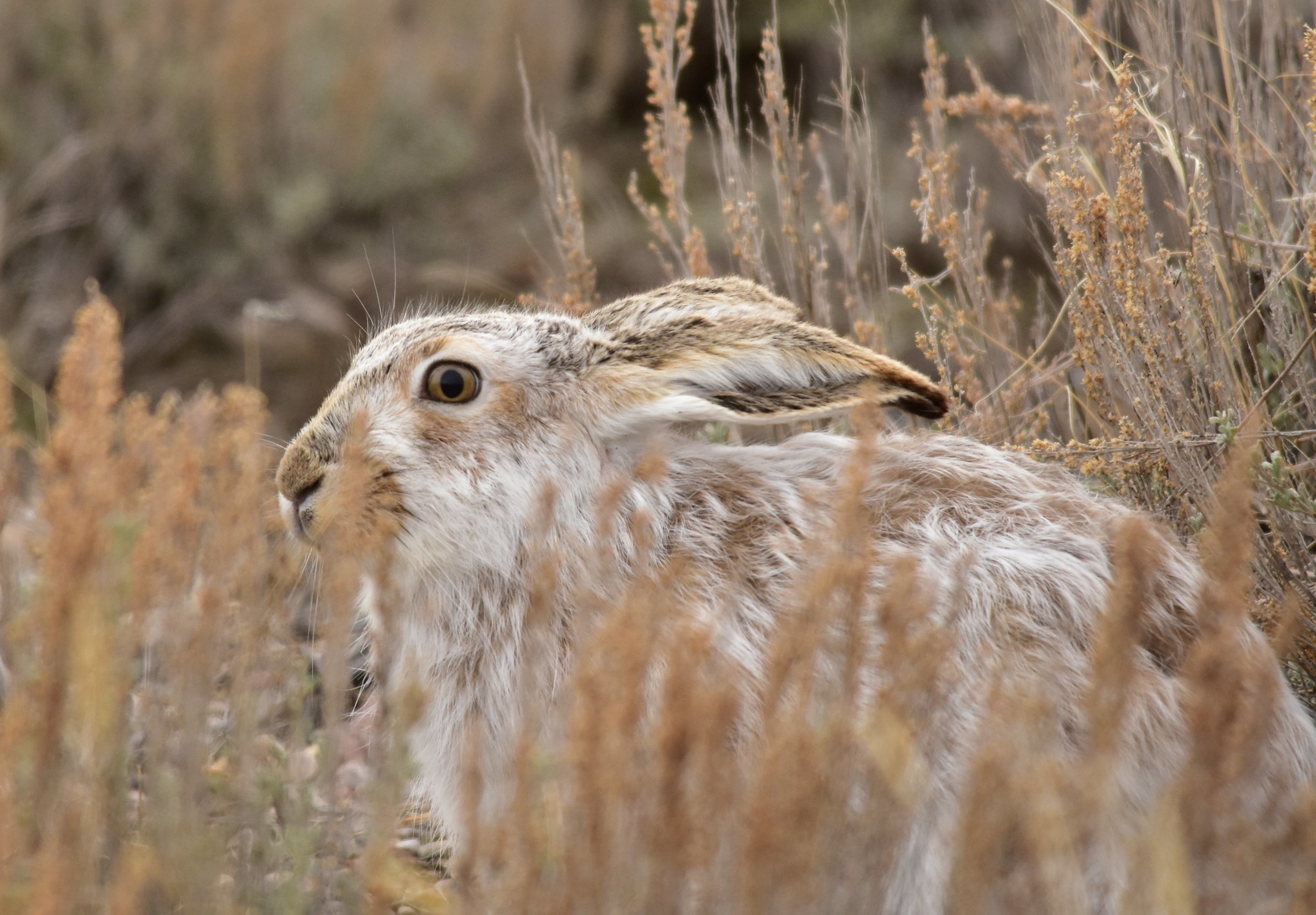
White-tailed Jackrabbit
The white-tailed jackrabbit is another common and widespread species, found in the northern parts of the western United States and upper Midwest and the Canadian prairie provinces.
This is one large hare, capable of reaching 9 pounds. In the northern parts of its range, it also turns white in winter, a striking sight. In summer, it’s a dusky color with the all-white tail a distinguishing feature. I also think it looks “furrier” than a black-tailed jackrabbit.
Sources say the white-tailed jackrabbit has expanded north in areas where forests are cleared for agriculture. But it’s not always a rosy picture for white-tailed jackrabbits. Declines have been reported in many areas.
My home in Idaho has both black-tailed and white-tailed jackrabbits. But I never find the two species together. In my experience, the difference is elevational, with white-tailed jackrabbits found at 6,000 feet and above. There is evidence to support this observation in the literature. In part, it may just be that white-tailed jackrabbits are less adaptable than black-tailed jackrabbits.
The excellent reference guide Lagomorphs (Johns Hopkins Press) notes that black-tailed jackrabbits eat a wider range of vegetation, giving them a competitive advantage. With habitat degradation, black-tailed jackrabbits have expanded, while the range of white-tailed jackrabbits has contracted.
White-tailed jackrabbits are more numerous in the northern parts of their range, and aggregations of more than 100 have been reported. I’ve never seen this in Idaho, and have rarely seen more than one or two in a hike.

Antelope Jackrabbit
The book Lagomorphs notes “The antelope jackrabbit has been considered the handsomest and most striking of the North American hares.” I agree. It’s a spectacular beast, with the largest ears and long legs. When it runs away, you see flashes of white on its rump, much like a pronghorn “antelope” (and hence, its name). The antelope jackrabbit is found in southern Arizona and northern Mexico, where it is locally common.
It is a desert animal, where it subsists on a variety of vegetation, including cacti.
Arizona has become a popular destination for birders, and rightfully so. The state also offers excellent mammal watching, and if you’re visiting one of the bird lodges, you owe to yourself to do a bit of looking for the furry critters – including antelope jackrabbits.
On a trip to Madeira Canyon, one dusk I drove down into the flats surrounding this well-known birding hotspot. Driving slowly along a dirt road of a wildlife management area, I scanned the surrounding brush. As dusk approached, I began seeing the animals. The large ears stuck out in the desert habitat. I was able to stop my rental car, slip out the door and slowly stalk within range for close-up views. I’ve had great sightings of wild hares in Africa, Asia and Europe. The antelope jackrabbit remains my favorite.
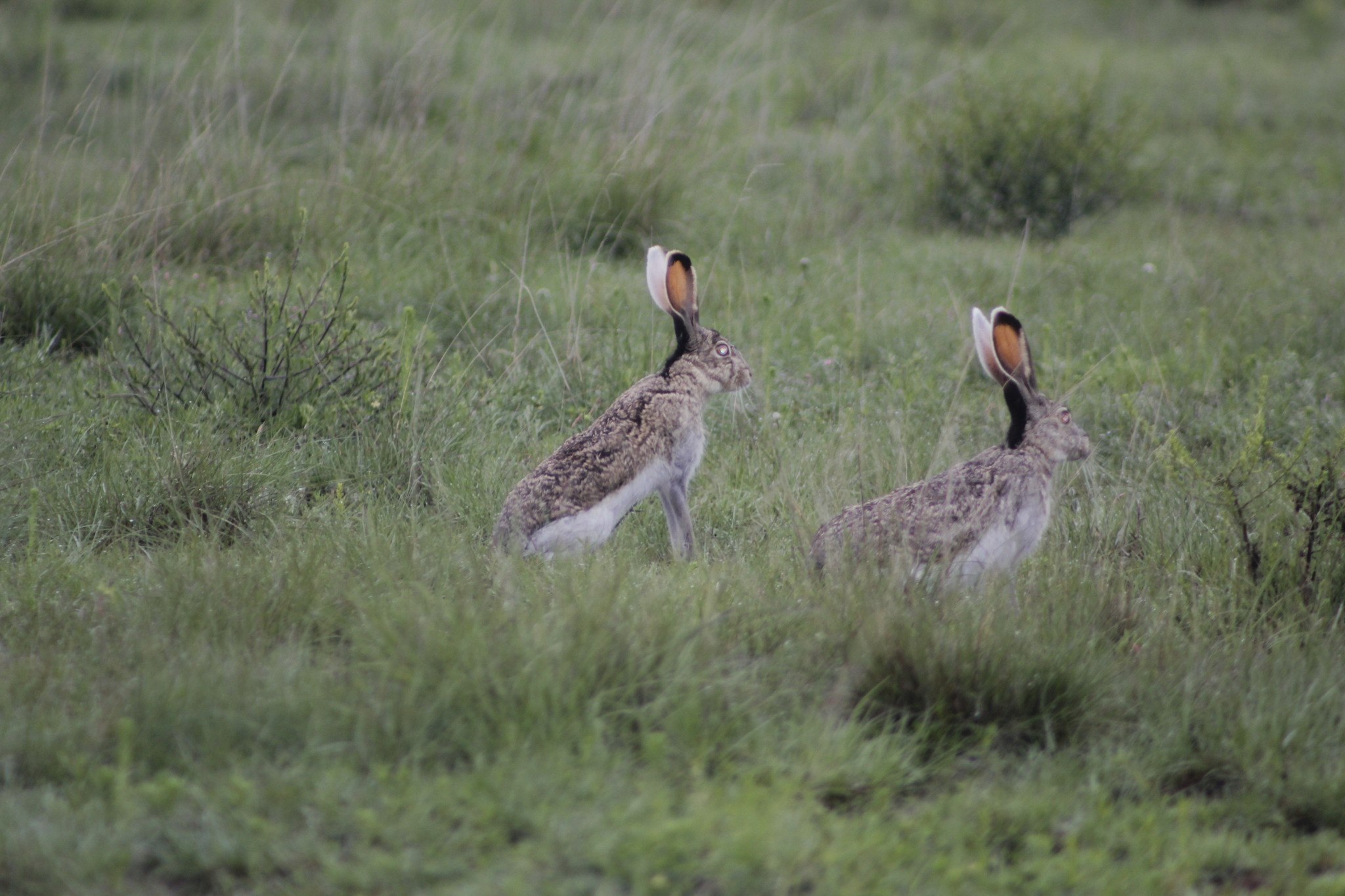
White-sided Jackrabbit
This is another charismatic jackrabbit, with the beautiful white sides that give the species its common name. It is fairly widespread if uncommon in a large area of Mexico (although more research is needed, a common theme with jackrabbit conservation).
In the United States, it would have to rate as one of the more difficult species to spot. That’s because it is found in only Hidalgo County in New Mexico. And it’s not very common there. Hard-core mammal enthusiasts search in the Animas Valley. Vladimir Dinets in his Peterson Field Guide to Finding Mammals, suggests Highway 338 south of Animas. Most successful spotters slowly cruise the roads at night. It’s not a bad idea to let local law enforcement know of your plans in advance so as to avoid suspicion. I haven’t done this trip, but it’s on my list.
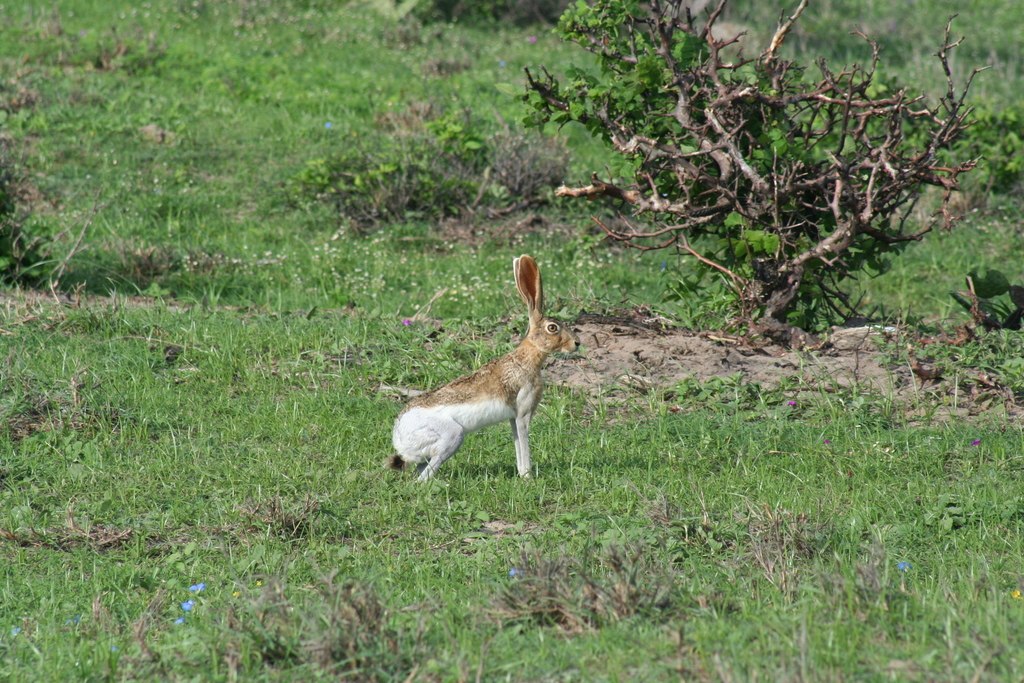
Tehuantepec Jackrabbit
The previous jackrabbits range over fairly wide areas and, while there may be conservation concerns (more on this in a bit) are not uncommon in suitable habitat. The Tehuantepec jackrabbit, on the contrary, is considered by some conservation biologists to be one of the most endangered mammals on earth.
This Mexican endemic is found only in four isolated populations around the Laguna Superior and Laguna Inferior of the Tehuantepec Isthmus of Oaxaca.
It faces the full gamut of conservation threats: overhunting, impacts from invasive grasses, habitat loss, overgrazing and genetic issues rising from small, disconnected populations.
This jackrabbit has a bright white underside and a yellow throat patch. It’s a cool-looking animal that very few know about. Unfortunately, I’m not sure there are enough mammal watching fans to build a wildlife tourism program for this species, but clearly the Tehuantepec jackrabbit needs more advocates.
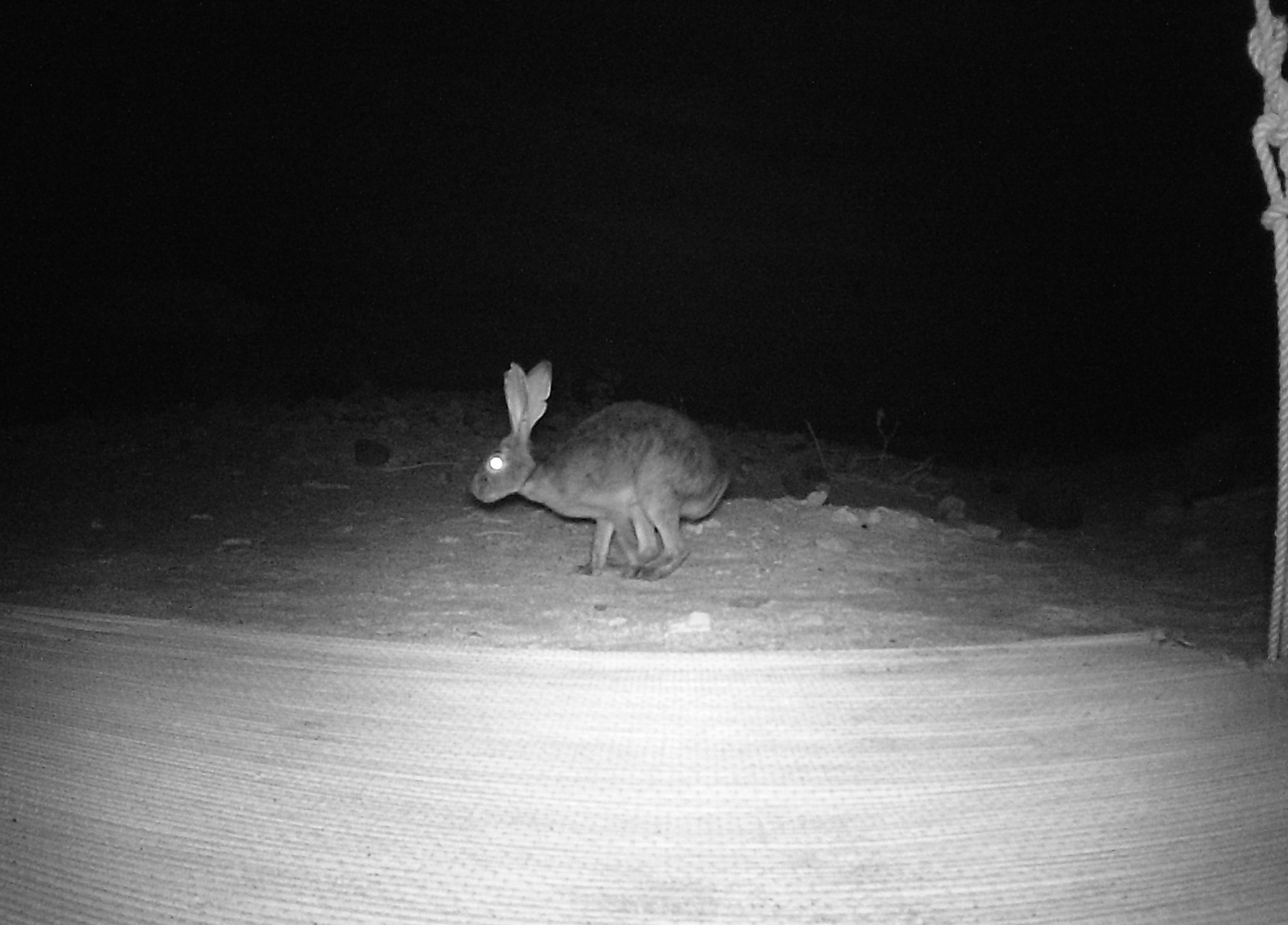
Black Jackrabbit
Here’s another Mexican endemic with a restricted range; the black jackrabbit is found on Espiritu Santo Island and La Partida Island in the Gulf of California. Fortunately, Espiritu Santa Island is an ecological reserve. It is home to several other endemic mammals, and can be visited on kayaking trips and other eco-tours.
Some biologists have argued that the jackrabbit is actually just a melanistic form of the common black-tailed jackrabbit. But recent genetic evidence suggests it is a separate species. Either way, it’s a cool animal. And searching for island endemics is always a great adventure for naturalists.
Espiritu Santo Island is also home to feral goats, which could compete with the jackrabbits. Hunters pursue these goats, keeping their populations in check, but the hunters sometimes also target jackrabbits.
Jackrabbits are beautiful, fascinating animals. I suspect, even with the abundant species, their numbers are much less abundant today. They deserve more research. They’re also worth seeking, whether you live in their range or are visiting on vacation. They’ll test your field skills. But put in the time, and you’ll be rewarded with observations of one of the coolest critters in the West.
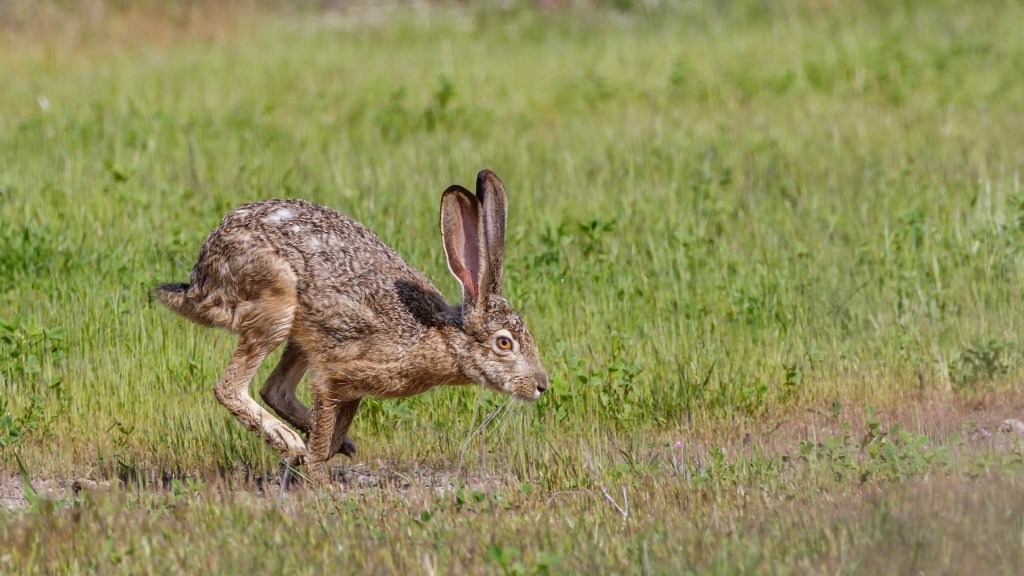



I live in Eastern Washington State. I am a photographer and have been spending a lot of time photographing these fascinating critters. We have black tailed jackrabbits locally but their numbers are greatly decreased or non-existent in some areas due to development.
My understanding is that our area, the Tri-cities, is the only area they exist in my state. Is there any efforts to preserve areas for these fascinating hares in my area?
Hi Tammy,
To date, most jackrabbit species have not attracted much conservation attention. They are still common in many parts of the western US, although not as common as they once were. Work by TNC and other organizations to conserve large, connected habitats help jackrabbits in addition to many other wildlife species. Hopefully attention from nature lovers like you will draw some research attention to these animals.
Best,
Matt Miller
Wonderful page and information. Thank you!
I’m guessing from the comments that the RHD hit the jackrabbits as well as the rabbits. Rabbit mortality in 2020 was nearly total at my farm near Stanley, NM (I’m retired now, and I live in Los Alamos where I’ve seen a few brush rabbits), and the jacks disappeared at about the same time.
I grew up in Far west Texas, El Paso. and the Jacks were prolific. Now they are very hard to find except out in the desert areas where there aren’t housing developments going on. I do miss the sight of these amazing critters !!!
I’ve lived in north east Tucson since late 70s. Used to see alot of jackrabbits. Haven’t seen any, at all, for years. Cotton tails not so much either. Why? Traffic, predators, low birth rate. Odd.
Craig,
Thanks for your question. I think the causes of jackrabbit declines in parts of their range is poorly understood. As with many wildlife declines, it is likely due to a combination of issues with habitat loss being important. That said, another factor may be the reason why you have noticed this rapid decline: there is a disease called rabbit hemorrhagic disease (RHD). RHD was confirmed in Arizona in 2020 (it’s also been found in my home state of Idaho). It is highly transmissible and fatal to rabbits and jackrabbits. I cannot say what you are witnessing, but that could be another factor influencing the lack of jackrabbits.
No Jackalopes? (not a serious question).